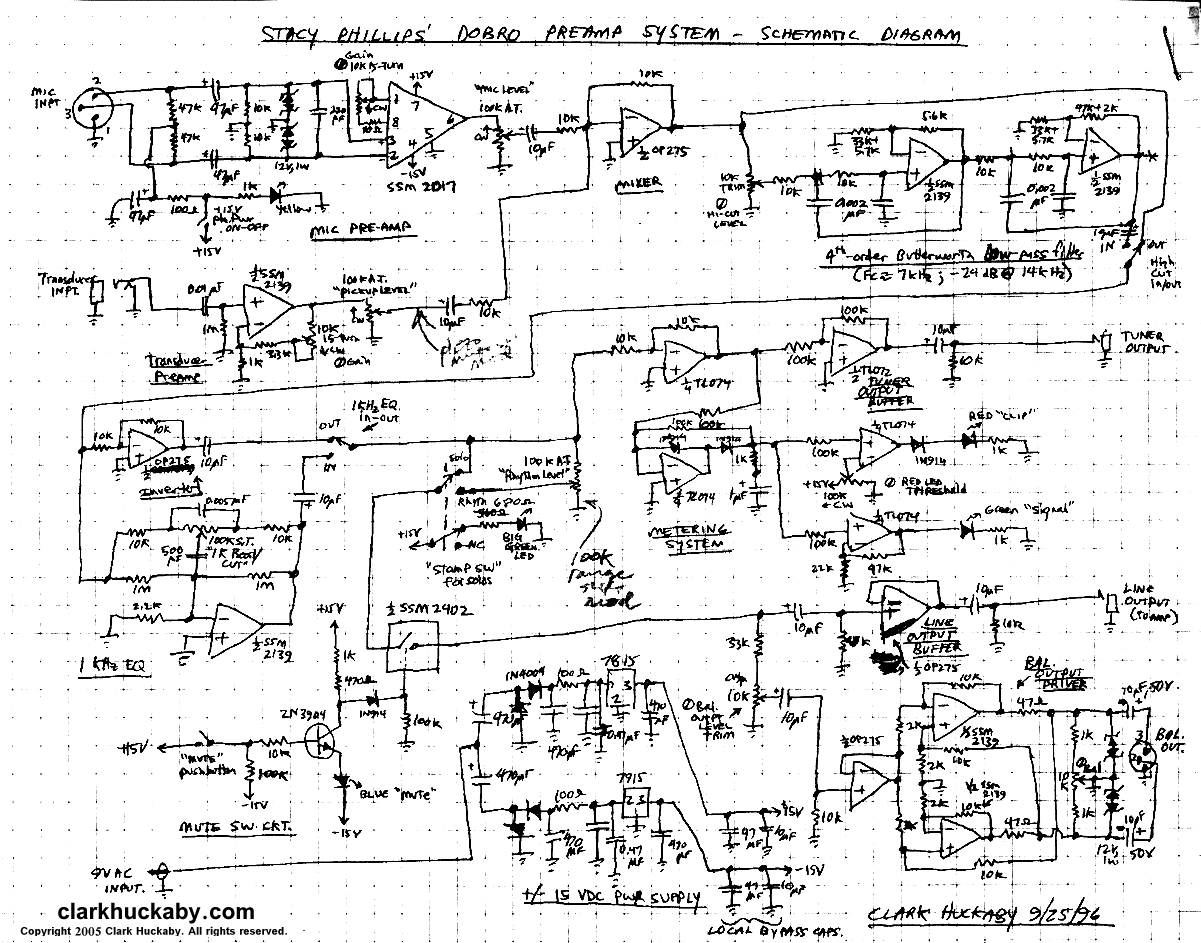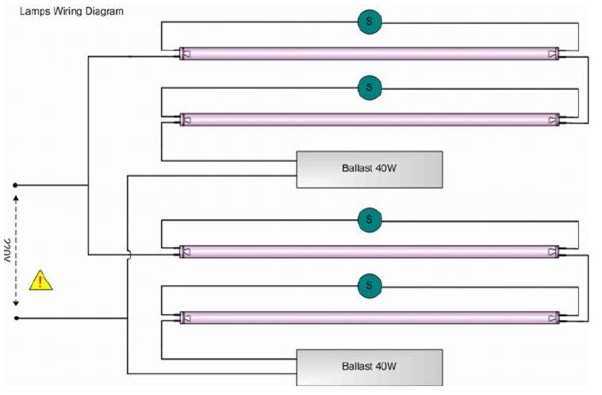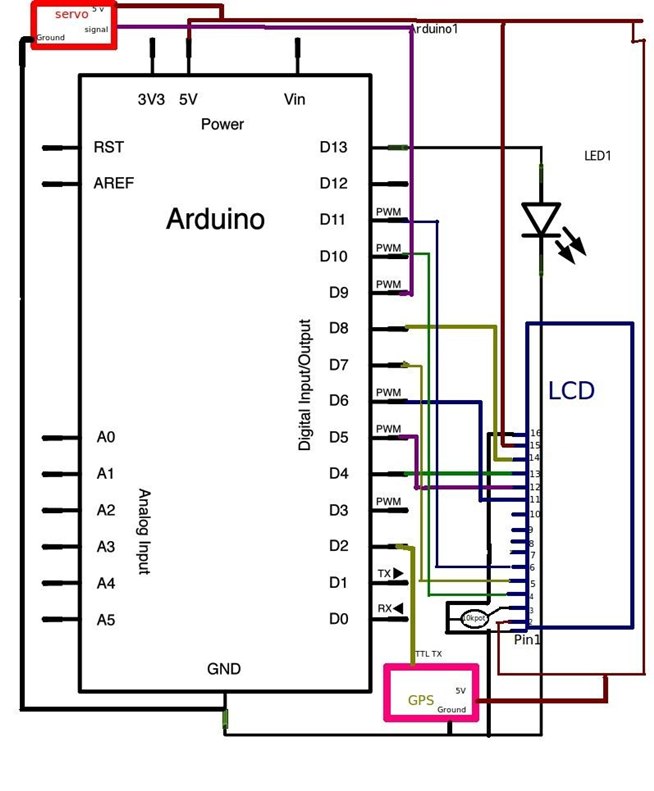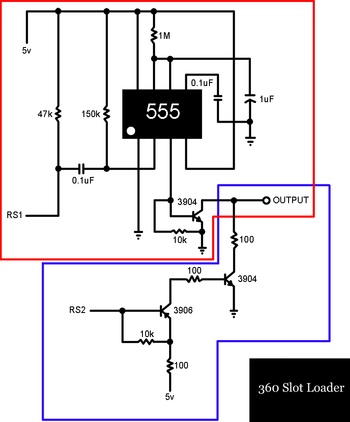
Fuzz box 4
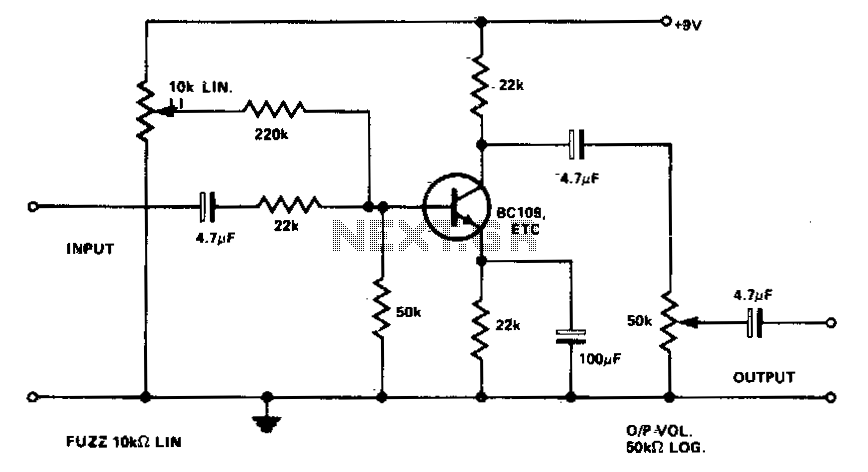
None of the components are particularly critical in value or quality, as distortion is the sole object. The transistor could be BC107, BC108, BC109, 2N2926, etc.
The circuit in question is designed primarily to achieve distortion, which suggests it is likely used in audio applications, such as guitar effects pedals or other sound processing units. The components selected for this circuit do not require high precision or exceptional quality, indicating that the focus is on the tonal characteristics imparted by the circuit rather than the fidelity of the signals processed.
The choice of transistors like the BC107, BC108, BC109, or 2N2926 indicates that the design can leverage common bipolar junction transistors (BJTs) that are widely available and cost-effective. These transistors are suitable for low to medium power applications and can operate effectively in audio frequency ranges, making them ideal for distortion circuits.
In a typical distortion circuit, the transistor is configured in a common emitter arrangement, which allows for significant gain and the clipping of the signal waveform, leading to the desired distortion effect. The input signal is fed into the base of the transistor, and the output is taken from the collector. Resistors and capacitors are employed to set the biasing conditions and to filter frequencies, ensuring that the distortion characteristics are tailored to the specific application.
A feedback loop may also be incorporated to control the amount of gain and shape the distortion characteristics further. By adjusting the values of resistors and capacitors, the user can modify the tonal qualities, including the level of saturation and the harmonic content of the output signal.
Overall, the circuit design emphasizes flexibility and creativity in sound design, allowing for a range of distortion effects while maintaining simplicity in component selection. This approach enables a broad spectrum of audio applications without the need for high-end components, making it accessible for hobbyists and professionals alike.None of the components are particularly critical in value or quality, as distortion is the sole object The transistor could be BC107-8-9, 2N2926, etc.
The circuit in question is designed primarily to achieve distortion, which suggests it is likely used in audio applications, such as guitar effects pedals or other sound processing units. The components selected for this circuit do not require high precision or exceptional quality, indicating that the focus is on the tonal characteristics imparted by the circuit rather than the fidelity of the signals processed.
The choice of transistors like the BC107, BC108, BC109, or 2N2926 indicates that the design can leverage common bipolar junction transistors (BJTs) that are widely available and cost-effective. These transistors are suitable for low to medium power applications and can operate effectively in audio frequency ranges, making them ideal for distortion circuits.
In a typical distortion circuit, the transistor is configured in a common emitter arrangement, which allows for significant gain and the clipping of the signal waveform, leading to the desired distortion effect. The input signal is fed into the base of the transistor, and the output is taken from the collector. Resistors and capacitors are employed to set the biasing conditions and to filter frequencies, ensuring that the distortion characteristics are tailored to the specific application.
A feedback loop may also be incorporated to control the amount of gain and shape the distortion characteristics further. By adjusting the values of resistors and capacitors, the user can modify the tonal qualities, including the level of saturation and the harmonic content of the output signal.
Overall, the circuit design emphasizes flexibility and creativity in sound design, allowing for a range of distortion effects while maintaining simplicity in component selection. This approach enables a broad spectrum of audio applications without the need for high-end components, making it accessible for hobbyists and professionals alike.None of the components are particularly critical in value or quality, as distortion is the sole object The transistor could be BC107-8-9, 2N2926, etc.
